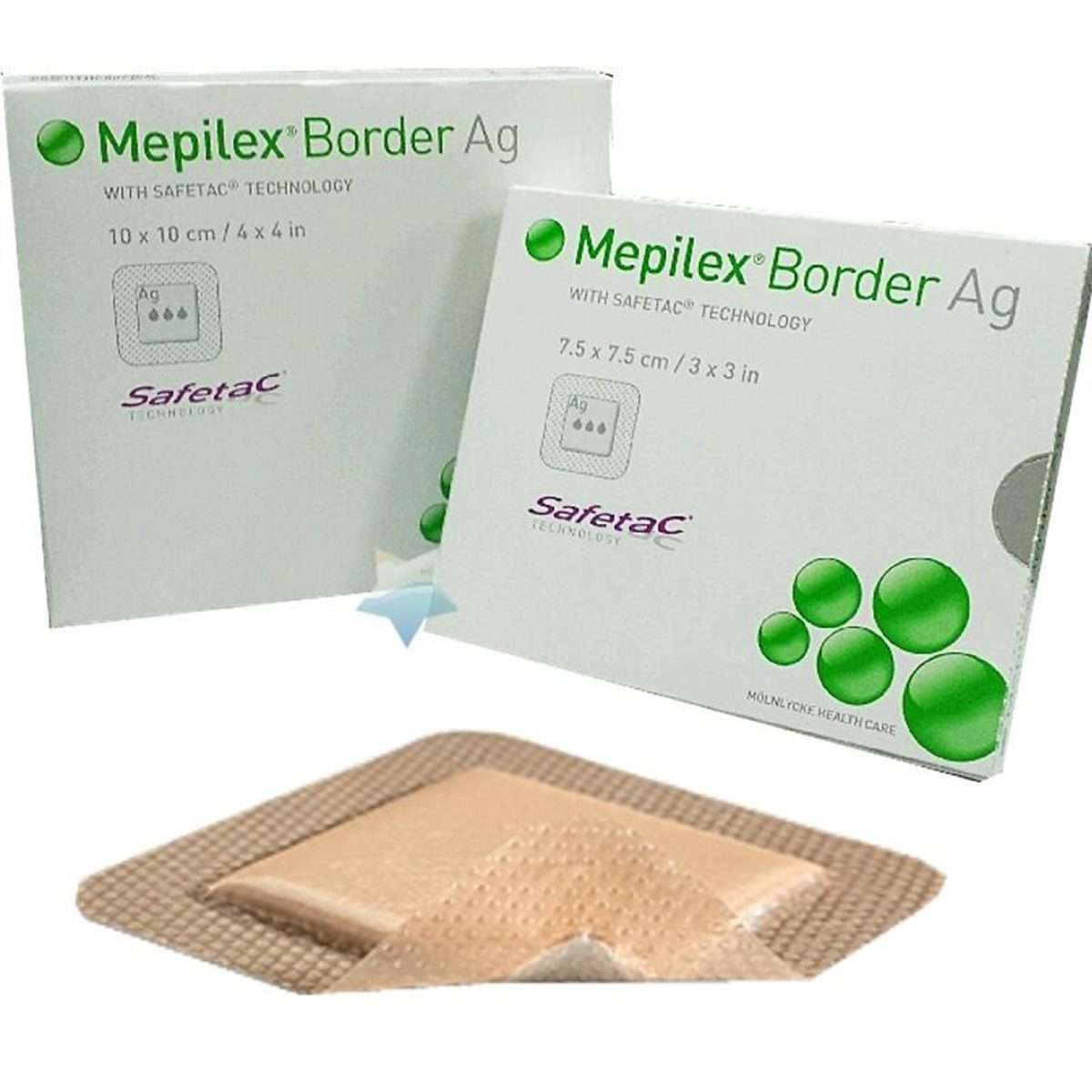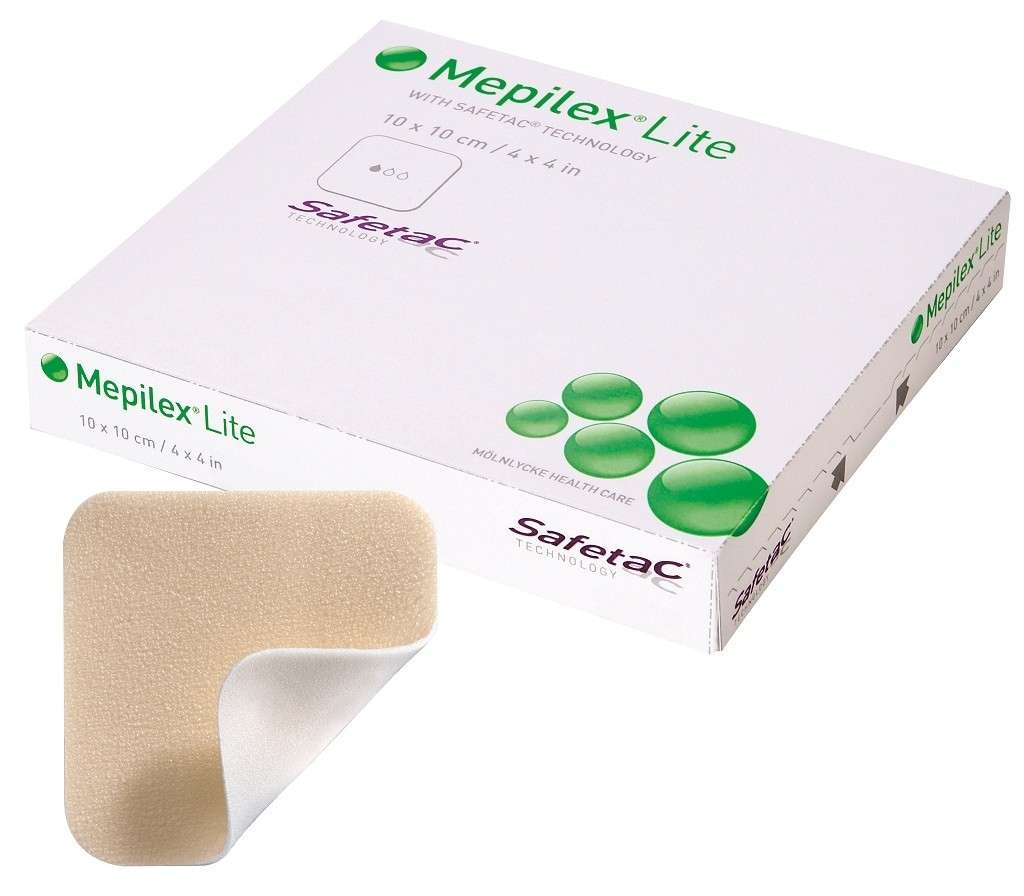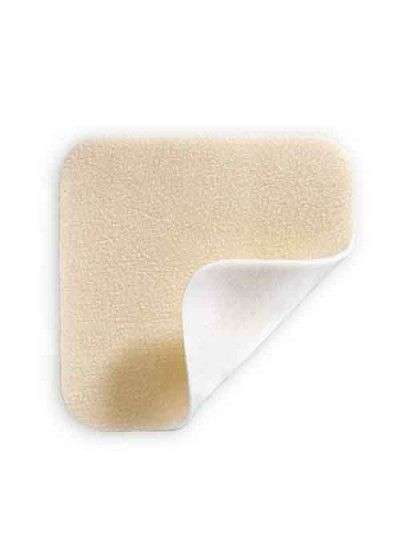What Is Mepilex Safetac Technology
The unique proprietary Safetac technology of Molnlycke resides closest to the skin. It has been proven to minimize pain to patients during dressing changes and does not cause skin reactions.
- Molnlycke dressing drastically reduces both the pain and tissue damage in wound management
- Without the trauma of maceration and skin-stripping, the healing process is accelerated
- Mepilex medicated wound dressing does not adhere to the moist wound bed, but only to dry skin
- Adheres gently to the surrounding skin for easy application of secondary fixation
- Seals the wound margins and reduces the risk of maceration
- For pressure ulcer prevention, its elasticity dissipates shear forces and provides assistance with the dressing after skin assessment
What Causes Sacral Pressure Ulcers
Pressure ulcers occur when there is prolonged pressure to the skin, usually over bony areas such as the elbows, spine, or sacral area .
Compression of the soft tissue causes blood vessels to collapse and reduces blood flow and oxygen delivery. This localized tissue damage usually happens when a person sits or lays for long periods of time in a chair, wheelchair, or bed.
Pressure ulcers begin forming under the skin, making them difficult to catch before a wound is actually visible. So its important to take these steps to help prevent sacral pressure ulcers from happening.
Read Also: Nursing Care Plan For Pressure Ulcer Prevention
What Is A Foam Dressing
Wound dressings can accelerate the healing process by protecting the injury or wound from bacteria and creating an environment which supports healthy healing. Foam dressings are an effective tool for moist wound healing and are particularly useful in preventing dressing-related trauma, managing exuding wounds, and minimizing dressing discomfort and pain.
Recommended Reading: Is Ulcerative Colitis Considered An Autoimmune Disease
Read Also: Home Remedies For Skin Ulcers
Frequent Movement And Repositioning
Depending on factors like age and nutrition status, pressure can cause internal tissue damage within 2-6 hours. And skin can show signs warning of breakdown after as little as 30 minutes of prolonged pressure.
To prevent sacral pressure ulcers, its important to change positions frequently, whether its taking a walk, moving from bed into a chair, or even changing the level of recline in a seated position.
Research shows that 30 degrees of wheelchair tilt helps to reduce pressure in the ischial, buttocks, and sacral areas. And alternating side lying positions or using a wedge cushion while in bed can also help to limit the burden on these areas.
While theres not one single best position to prevent sacral pressure ulcers, you can reduce your risk by moving/shifting weight frequently and avoiding prolonged amounts of time sitting or lying in one spot.
Types Of Mepilex Wound Dressings

Molnlycke Mepilex provides an assortment of advanced wound care dressings, each with its own specialized features and benefits. It offers several options to fit the unique type and size of the wound. Mepilex Wound Dressings are broadly categorized into Mepilex Antimicrobial Dressings, Mepilex Foam Dressings, and Mepilex Wound Contact Layers. These dressings are tailored to satisfy varying customer needs and provide them with ultimate in comfort.
Don’t Miss: How Do You Get Pressure Ulcers
Top Reasons To Buy Mepilex Dressing
- Enhances patient comfort during wear
- Atraumatic to the wound and surrounding skin while dressing change
- Most of them can be lifted and re-adjusted without losing adhesive
- Less trauma and pain to the patient
- Does not stick to the moist wound
- Stays in place for several days based on the wound condition
- Minimum risk of maceration
- Easy to apply and remove
+ Hydrocolloid Wound Dressing For Pressure Ulcers Png
Read Also
Hydrocolloid dressing reduce the risk of pressure ulcer . Treating the underlying cause will often address and promote wound healing. Managing sacral pressure ulcers with hydrocolloid dressings: Secondary outcomes were time to heal, ulcer area healed per day, linear healing of wound edge, and cost of therapy. Hydrogel dressings consist of a starch polymer and up to 96% water.
You May Like: Does Stomach Ulcer Cause Pain
You May Like: Best Acid Reducer For Ulcer
Key Points For Decision Makers
| Mepilex Border Heel and Sacrum dressings show promise for preventing pressure ulcers in people who are considered to be at risk in acute-care settings. However, there is currently insufficient evidence to support the case for routine adoption in the NHS. |
| Research is recommended to address uncertainties about the claimed benefits of using Mepilex Border Heel and Sacrum dressings. This research should also explore issues such as: |
| the incidence of heel and sacrum pressure ulcers in NHS acute-care settings |
| criteria for patient selection to reduce pressure ulcer incidence with Mepilex Border Heel and Sacrum dressings in addition to standard care. |
What Is A Sacrum Dressing
- To prevent pressure ulcers from forming
- To treat already existing medium to high exuding sacral wounds like pressure injuries and ulcers
- Mepilex border combines the ability to handle and retain draining fluid so exudate is managed with less risk of maceration or skin break down.
- Mepilex uses Safetac technology which reduces pain and tissue damage during dressing changes.
- Mepilex dressings with Safetac technology do not stick to the wound bed they seal the wound edge to prevent maceration, they dont strip skin when removed while providing an optimal wound bed for quicker healing.
- Mepilex Border Sacrum dressing is an all-in-one foam dressing for pressure ulcers and other chronic and acute wounds of the sacral area.
Also Check: Foam Boots For Pressure Ulcers
Description Of The Condition
Pressure ulcers, also known as pressure injuries, decubitus ulcers and bed sores, are a localised injury to the skin, underlying tissue, or both, usually occurring over a bony prominence, as a result of pressure, or pressure in combination with shear stress from restrictive bedding where unaligned body weight is pushing one part of the body such as bone or muscle in one direction, and another part of the body, usually skin, in the opposite direction . The development of a pressure ulcer is a serious complication resulting in pain, decreased quality of life and significant expenditure of both time and money for the healthcare industry . Pressure ulcers are an internationally recognised patient safety problem, estimated to affect 2.5 million people annually .
The main factors associated with the development of pressure ulcers are exposure of the skin to excessive pressure, and a reduced tolerance of the skin to pressure. Pressure is exerted on the skin, soft tissue, muscle, and bone by the weight of an individual or a device applied against the surface of their skin. Tissue tolerance is the ability of the skin and its supporting structures to tolerate the effects of pressure by distributing it and by the transfer of pressure loads from the skin surface to the skeleton . Tissues are capable of withstanding enormous pressures briefly, but prolonged exposure to pressure initiates a series of events that lead potentially to necrosis and ulceration.
Designed With Patients At Heart
Optimise your wound treatment and prevention with Mepilex® dressings. The Mepilex range is supported by more than 300 pieces of evidence of strong clinical and health economic outcomes.
Depending on the challenge youre facing, Mepilex dressings are available in many shapes and for many uses. Innovation is in our DNA. So were always improving and developing new solutions to deliver even better ouctomes for patients.
Mepilex will continue to drive the future of treatment and prevention.
Read Also: Pressure Ulcer Care At Home
Which Wound Dressing Is Best For Your Pressure Ulcer
Now that weve touched on some of the more common types of dressings used for pressure ulcers, you may be wondering which is the best for your particular situation. The answer will depend on multiple factors including where the pressure ulcer is located, how severe the bedsore is, and the degree of skin and tissue damage. Talk to your health care professional about any pressure wounds you notice on your body as soon as possible.
Keep Skin Clean Dry And Moisturized

In addition to pressure, the sacral area is at risk for breakdown due to the potential for sweat and other body fluids to sit on the skin.
These sources of moisture cause irritation, and can result in maceration-or softening of the tissue. Because this weakens the skin, it can make the tissue more susceptible to sacral pressure ulcers forming.
To avoid this, ensure the area is completely cleaned and dried after any contact with sweat, urine, or stool. And to prevent wounds due to weakened or cracking skin resulting from dryness, apply a moisture barrier or moisturizing lotion as needed throughout the day.
Dont Miss: Sample Meal Plan For Ulcerative Colitis
Also Check: Irritable Bowel Syndrome Ulcerative Colitis
Pressure Ulcer Treatment And Prevention With Mepilex Border Dressings
Join Penny for a discussion of pressure ulcers, aka bed sores, one of the leading hospital acquired conditions in the world, with up to 23% of hospital patients affected. Learn how Mepilex Border dressings can help treat and prevent these painful, potentially life-altering injuries.
Shop Mepilex Border Flex:
Shop Mepilex Border Heel:
Shop Mepilex Border Sacrum:
Absent proper prevention protocols, pressure ulcers are apt to appear in individuals dealing with immobility issues or paralysis, and in surgical patients. People in these situations will tend to stay in a fixed position for long periods of time, creating an environment for ulcers to occur. Common problem areas include the sacrum, buttocks, hips and heels. Bony prominences and locations where medical devices are worn are also considered high-risk.
Mepilex® Border Flex dressings five-layer construction protects the wound and handily absorbs any exudate. The durability and gentle adhesion of Molnlyckes SafeTac® technology helps it to stay in place for several days, reducing the frequency of dressing changes. Because regular monitoring of pressure ulcers is vital to the healing process, Safetac® is ideal because it allows the dressing to be lifted from the wound with little-to-no pain for the patient, and be re-applied several times over the course of the dressings life.
Medical Monks on Facebook:
Construction And Features Of Foam Dressings
Made of semipermeable polyurethane, foam dressings contain foamed polymer solutions with small, open cells that can hold fluids. These cells may be layered with other materials. Their absorptiveness varies depending on the thickness of the dressing. The contact area of a foam dressing is nonadherent and nonlinting, so the dressing is easy to remove. The outer layer of the dressing is often hydrophobic or waterproof to keep out bacteria and other contaminants. Foam dressings come either with or without an adhesive border and in many sizes and shapes. Some foam dressings also include a bacterial barrier made from a transparent film. Additionally, some foam dressings are impregnated with an antimicrobial agent such as silver, Manuka honey, cadexomer iodine, antibiotics, or include surfactants as a vehicle for delivery of these substances to the wound bed.
A primary feature of foam dressings is that they help maintain a moist wound environment. Also important is that foam helps cushion the wound and periwound area from additional trauma, as well as providing thermal insulation for wounds. Easy to apply and remove, foam dressings dont cause wound trauma. Foam dressings can be used when there is an infection and during compression therapy. In addition, foam dressings are compatible with enzymatic debridment agents. Depending on the amount of exudate, foam dressings have a wear time of one to seven days.
Recommended Reading: Ulcerative Colitis Surgery J Pouch
Silicone Adhesive Multilayer Foam Dressings To Prevent Pressure Ulcer
| The safety and scientific validity of this study is the responsibility of the study sponsor and investigators. Listing a study does not mean it has been evaluated by the U.S. Federal Government. Read our disclaimer for details. |
| First Posted : February 22, 2018Results First Posted : April 26, 2021Last Update Posted : April 26, 2021 |
- Study Details
The objective of this study is to determine if silicone adhesive multilayer foam dressings applied to the sacrum, heels and greater trochanter in addition to standard prevention reduce pressure ulcer incidence category II, III, IV, Unstageable and Deep Tissue Injury compared to standard pressure ulcer prevention alone, in at risk hospitalised patients. In particular, this trial extends previous trial results obtained in ICU setting. Therefore, only a maximum of 25% of patients will be recruited from ICU settings.
When To Use Mepilex Border Sacrum
Treatment
Use Mepilex Border Sacrum for medium-to-high exuding sacral wounds, such as pressure ulcers or surgical excision of pilonidal cysts. The dressing maintains a moist wound environment, which supports debridement, so you might see an initial increase in the wound size. This is normal and to be expected.
Pressure ulcer prevention
A recent randomised controlled trial in the USA revealed a statistically significant effect of Mepilex Border Sacrum in reducing the incidence of hospital acquired pressure ulcers by 88% You can apply the dressing prophylactically for at risk patients , such as the immobile, those with poor skin perfusion and impaired skin condition, in emergency rooms, in intensive care, or before and during long surgical interventions. Scientific studies have demonstrated that Mepilex Border Sacrum has the ability to impact on four extrinsic factors that can contribute to developing pressure ulcers: by minimising and redistributing shear, redistributing pressure, reducing friction, and maintaining an optimal microclimate .
Note: the use of dressings as part of a prophylactic therapy does not preclude the need to continue to develop and follow a comprehensive pressure ulcer prevention protocol.
Read Also: Carbohydrate Diet For Ulcerative Colitis
When To Use Mepilex Border Heel
Treatment
Mepilex® Border Heel is specifically designed to fit the heel. The five-layer absorbent foam structure effectively manages exudate and the wound environment. So you can use it in the treatment of exuding wounds such as pressure ulcers, diabetic foot ulcers, heel ulcers, traumatic wounds, and other secondary healing wounds.
Pressure ulcer prevention
Mepilex Border Heel has been proven to prevent pressure ulcers . You can apply the dressings prophylactically for at-risk patients , such as the immobile, those with poor skin perfusion and impaired skin condition, in emergency rooms, in intensive care, or before and during long surgical interventions. Scientific studies have demonstrated that Mepilex Border Heel has the ability to impact four extrinsic factors that can contribute to developing pressure ulcers: by minimising and redistributing shear, redistributing pressure, reducing friction and maintaining an optimal microclimate .
Note: using dressings as a prophylactic therapy does not replace the need a comprehensive pressure ulcer prevention protocol.
Foam Dressings For Treating Pressure Ulcers
What is the aim of this review?
The aim of this review was to find out whether foam dressings have any advantages or disadvantages in healing pressure ulcers compared with other dressings . Researchers from Cochrane collected and analysed all relevant studies to answer this question and found nine relevant studies.
Key messages
There is no clear evidence from any of the studies included in this review that foam dressings are more effective at healing pressure ulcers than other types of dressings or that foam dressings are more cost effective than other dressings. This is due in part to the low quality of the studies, many of which had small numbers of participants and did not provide accurate details of their methods.
What was studied in the review?
Pressure ulcers are wounds that develop on bony parts of the body such as the heels, hips and lower back. Sitting or lying in the same position for long periods can cause damage to the skin and underlying tissue. People at risk of developing pressure ulcers include those with limited physical mobility such as people with spinal cord injuries, older people, or those ill in hospital.
What are the main results of the review?
Generally, the studies we found did not have many participants and the results were often inconclusive. Overall the evidence that exists is of very low quality.
How up to date is this review?
We searched for studies that had been published up to February 2017.
You May Like: Best Mattress For Pressure Ulcers
Molnlycke Healthcare Mepilex Border Foam Dressing 5ct
HSA/FSA Eligible
- Safetac technology minimizes pain and trauma at dressing changes
- Helps to prevent pressure ulcers
- All-in-one dressing for chronic wounds such as pressure ulcers
- Offers a combination of excellent fluid handling capacity and retention for effective exudate management with less risk of maceration 5
- For optimal exudate management excellent fluid handling capacity and excellent retention of fluids
- For chronic wounds like pressure ulcers and diabetic foot ulcers
- To prevent pressure ulcers development
- To maintain a moist wound environment
This item is FSA eligible.
Proper Foam Dressing Application Instructions

The procedure for applying a foam dressing is as follows:
The flexibility of foam dressings allows for a wide variety of clinical applications with wounds that have from moderate to heavy exudate. Because they are easy to use and can be easily cut to fit irregular wound areas, they are a good dressing choice for many situations.
The views and opinions expressed in this blog are solely those of the author, and do not represent the views of IncontinenceSource, Kestrel Health Information, Inc., its affiliates, or subsidiary companies.
Also Check: How Do You Get Ulcerative Colitis